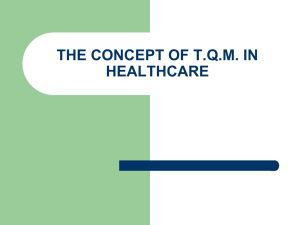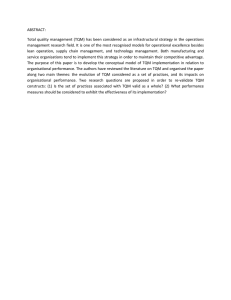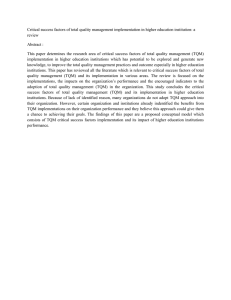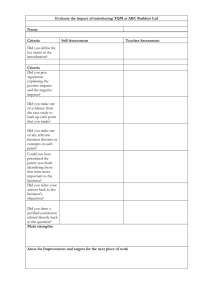(TQM) Implementation
advertisement
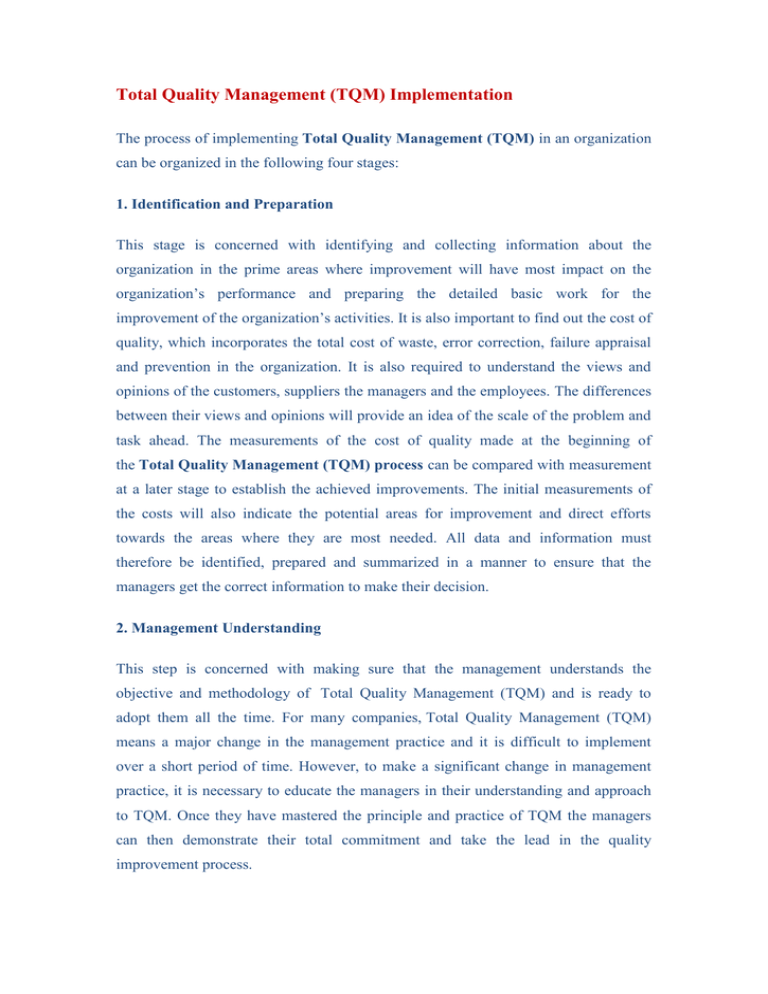
Total Quality Management (TQM) Implementation The process of implementing Total Quality Management (TQM) in an organization can be organized in the following four stages: 1. Identification and Preparation This stage is concerned with identifying and collecting information about the organization in the prime areas where improvement will have most impact on the organization’s performance and preparing the detailed basic work for the improvement of the organization’s activities. It is also important to find out the cost of quality, which incorporates the total cost of waste, error correction, failure appraisal and prevention in the organization. It is also required to understand the views and opinions of the customers, suppliers the managers and the employees. The differences between their views and opinions will provide an idea of the scale of the problem and task ahead. The measurements of the cost of quality made at the beginning of the Total Quality Management (TQM) process can be compared with measurement at a later stage to establish the achieved improvements. The initial measurements of the costs will also indicate the potential areas for improvement and direct efforts towards the areas where they are most needed. All data and information must therefore be identified, prepared and summarized in a manner to ensure that the managers get the correct information to make their decision. 2. Management Understanding This step is concerned with making sure that the management understands the objective and methodology of Total Quality Management (TQM) and is ready to adopt them all the time. For many companies, Total Quality Management (TQM) means a major change in the management practice and it is difficult to implement over a short period of time. However, to make a significant change in management practice, it is necessary to educate the managers in their understanding and approach to TQM. Once they have mastered the principle and practice of TQM the managers can then demonstrate their total commitment and take the lead in the quality improvement process. 3. Scheme for Improvement This stage is concerned with identifying quality issues and affects a resolution of them by management led improvement activities. To develop quality improvement scheme, it is necessary to identify the quality problems in each division, in each department and throughout the whole organization. A scheme of training for improvement can be established after the realization of the following aspects of the organization. They are: Purpose of the department, Customer’s and suppliers relationship, Meeting customer needs, Problem causes and best solutions, Prevention of recurring problems, Customer satisfaction, Priorities for improving efficiency At this stage it is essential to know that any scheme for improvement requires substantial investment in training, management time and communication. 4. Critical Analysis This stage starts with new targets and. take the complete improvement process to everybody indicating supplier and customer links in the quality chain. It also obtains information about progress and consolidates success. To focus quality aspects, everybody in the organization must assess the Total Quality Management (TQM) process. It is essential to incorporate the perception of both internal and external customers. It is also important to ensure that everybody in the organization gets some feedback of the success on a regular basis and at the same time the individual and team contributions are given the recognition. Setting up of new targets as required by customers at this stage will automatically upgrade the quality standard of the organization and maintain the competitive position in the market place. Credit: MBA Production Management-CU
